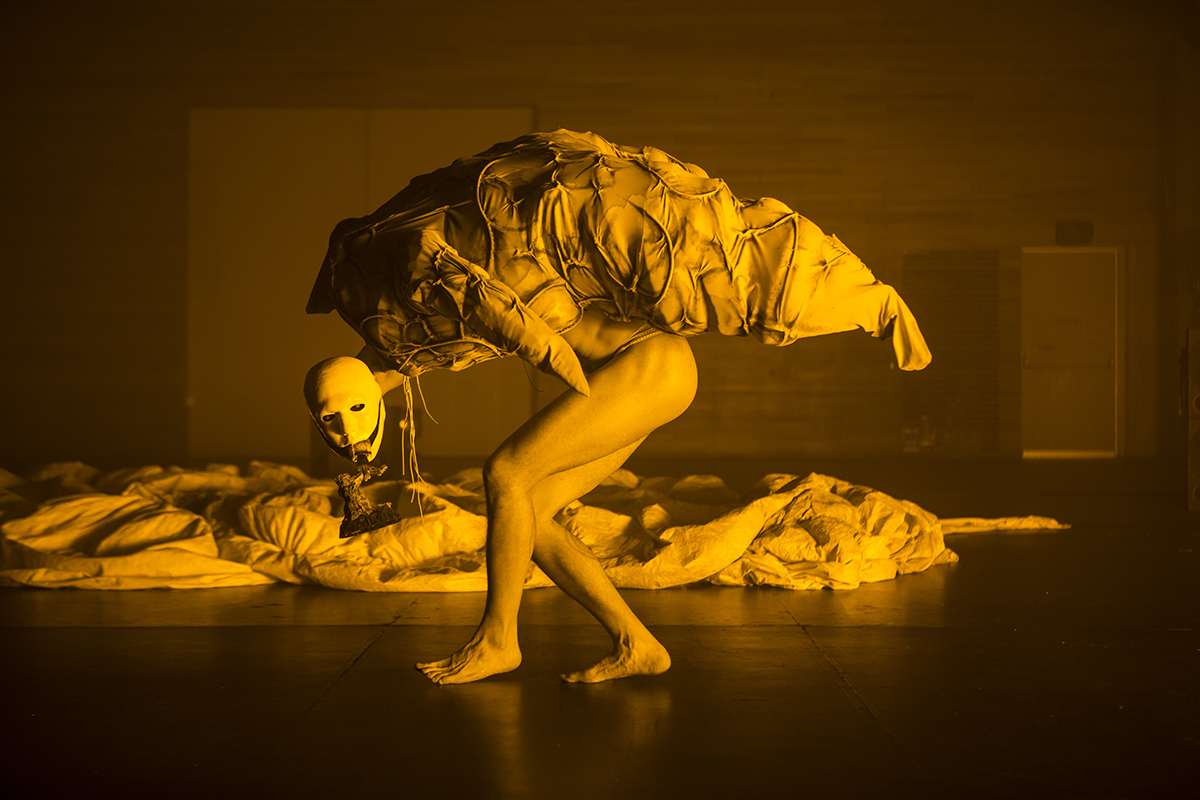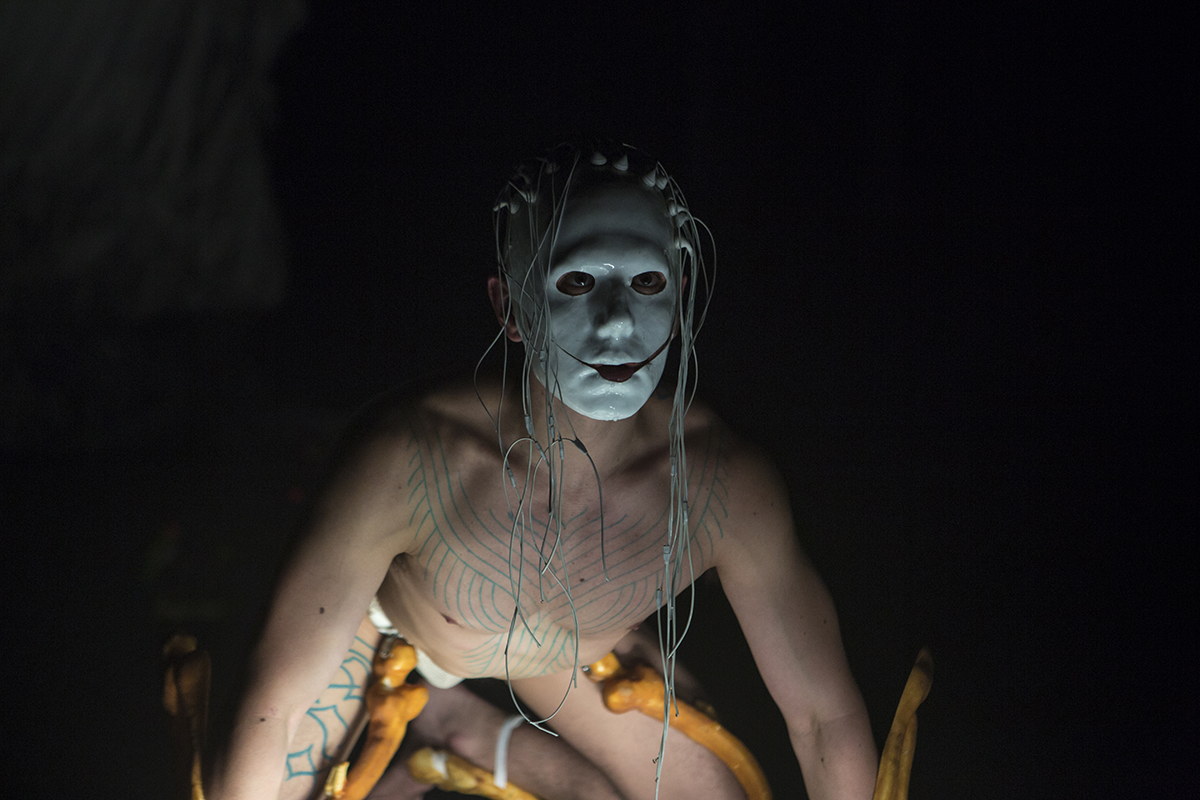
Liveworks: CARRION: Magnificent mutancy
I learned from reading and listening to interviews with Justin Shoulder that his practice was formed in community — in queer clubs, and in association with queer, activist and diasporic performance collectives. The prominence of community in his work is reflected in the turnout at this evening’s performance, and in the appreciative roar from the audience even before CARRION has begun.
I have previously seen images of Shoulder’s costumes (made in collaboration with Matthew Stegh), but have never seen them animated by a performer. While the costumes possess a transformational power all of their own, one of the aims of CARRION was to explore how the body could become more deeply engaged in these transformations — how the body itself might also transform. What I sense, in CARRION, is a profound melding of costume and body, a mutual transformation which produces creatures that feel real, through and through.
The creatures both are, and are not, recognisable. They possess multiple qualities that flicker in and out of sight, depending on how they move. The effect is mirage-like. A giant, innocuous-looking grub or butterfly pupa has a sensual cleft running down its centre, which folds open to reveal a smooth human back. A long-limbed, masked figure that wears its bones on the outside is simultaneously endearing in its curious exploration of the stage, and somehow sinister, with its gash-like smile and croaky, staccato vocalisations. I often don’t know quite what I’m seeing, sometimes don’t even know if it’s possible to be seeing what I’m seeing. I have had this sort of experience in recent work by choreographer Victoria Hunt (artistic collaborator on CARRION) — it turns my stomach.

CARRION, Justin Shoulder, Liveworks 2017, photo Alex Davies
The piece takes us through an epic progression of different states, as Corin Ileto’s musical score drives emotion through the performance space in big, vivid strokes.
A costume of bones is prepared in reverent solitude, knuckles clattering on the floor in the quiet. That endearing yet unsettling masked figure becomes riotous, and tears down a cloudscape so that it lies in a heap in the rising smoke. A pink, flouncy enormity rises up, the size of a house, burping, gluttonous, like a spirit gorging itself, and then sinks back down into the earth.
Throughout, a set of small plastic birds is arranged and rearranged on the stage. They shunt their necks mechanically from side to side, spurting erratic squawks, whistles, and the sing-song phrase, “I see you!”
This artificial birdsong takes on a particularly eerie resonance at the end of the work, when only one lone, plastic bird still sputters, and a big, bird-like creature with a long neck emerges from the debris of all that has gone before. This bird-like being strikes me as a lone survivor lost in a destitute landscape. It takes in its surroundings and releases a devastating, otherworldly howl. Mourning. Panic. In this moment, all feels lost in the world.
CARRION presents something like a dream-space – an allegorical space, a space of in-betweens and of fantastical proportions – in which critical questions about contemporary humanity present as vivid, amorphous emotions. It feels apt that this world should disappear the way it does at the end of the work: that, as our lone survivor releases a final wail, it is all whisked away into total, inky blackness.
–
Performance Space, Liveworks Festival of Experimental Art, CARRION, lead artist, performer Justin Shoulder, composer Corin Ileto, mentor, artistic collaborator Victoria Hunt, costume, set design Matthew Stegh, Justin Shoulder, lighting, visual design Benjamin Cisterne, sound mastering Bob Scott; Carriageworks, Sydney, 25-28 Oct
Top image credit: CARRION, Justin Shoulder, Liveworks 2017, photo Alex Davies






